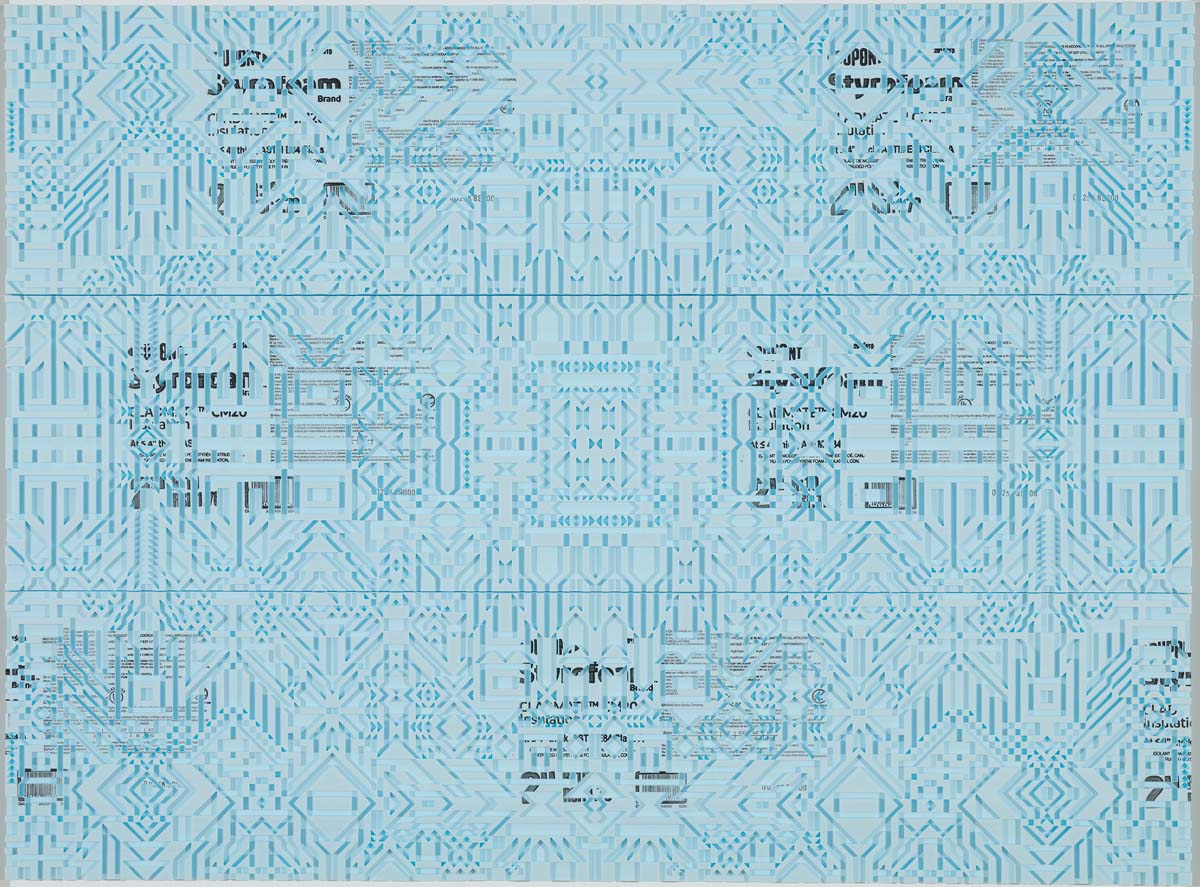Resilient to the Bones
Artist Caroline Monnet’s current exhibition at the Montreal Museum of Fine Arts transforms raw construction materials to draw attention to the housing crisis in Canada’s Indigenous communities.

As a child, Anishinaabe/French artist Caroline Monnet watched her parents renovate old cottages into homes. The powerful act of transforming raw construction materials into life-affirming shelters has been behind much of her artwork, including early films about people mobilizing to build houses.
In her current work, these ideas are expressed through large-scale ornamented construction materials: Monnet carves Indigenous-inspired patterns into Styrofoam insulation boards and plywood panels, and folds Tyvek into elaborate wall hangings, or embroiders it with Anishnabek motifs.
The work draws attention to the housing crisis in Indigenous communities, and the lack of a federal vision to address the problem. “First and foremost, it’s about having a dialogue around the terrible conditions in Canada’s backyard,” says Monnet, noting how many reserves fail to meet basic provisions for clean water and shelter.
The work also aims to counter misinformed perceptions that the dilapidated housing of reserves, as shown in many media images, represents the character of its inhabitants. “We imagine people reflecting the houses they live in,” she says. “How can we make these places with more pride?” One of her pieces embeds a Winston Churchill quote onto pink Styrofoam: “We shape our homes, and then our homes shape us.”
Monnet points out how the housing provided to Indigenous communities is both scarce and expensive, but also sterile and generic. In counterpoint, her elaborately decorated artwork signals how homes have the potential to be crafted with care, and for their every surface to carry cultural significance.
The patterning of her current pieces is inspired by traditional Anishnabek beadwork and birchbark basket designs. “Those baskets are created using an origami process of folding and biting the bark with your teeth,” explains Monnet, whose mother is Algonquin from the Maniwaki region of Quebec.
The symmetrical designs in her art also resemble city maps, or QR codes. “They talk about the marks left on ancestral land in the face of progress,” says Monnet. “They also act almost as microchips to transfer knowledge across generations.”
Resilient to the Bones is part of Monnet’s current solo exhibition at the Montreal Museum of Fine Arts, titled Ninga Minèh—Anishinaabemowin for “promise, I give it to you.” At the centre of the exhibition is a two-part installation, Pikogan (meaning “shelter”). In one half of the installation, a wigwam-inspired dome is made of PVC tubing, evoking utopian models of architecture and pointing to the lack of clean water in many Indigenous communities. A second, compartmentalized structure called “It Cracks with Light” is hung with Monnet’s artwork. “Every surface is a place for ornament,” says Monnet. “It’s about bringing hope into homes.”
Ninga Minèh is on display at the Montreal Museum of Fine Arts until August 1, 2021.
